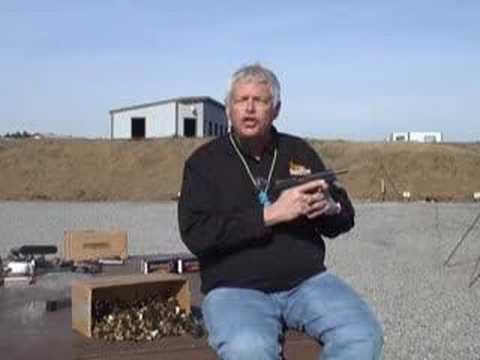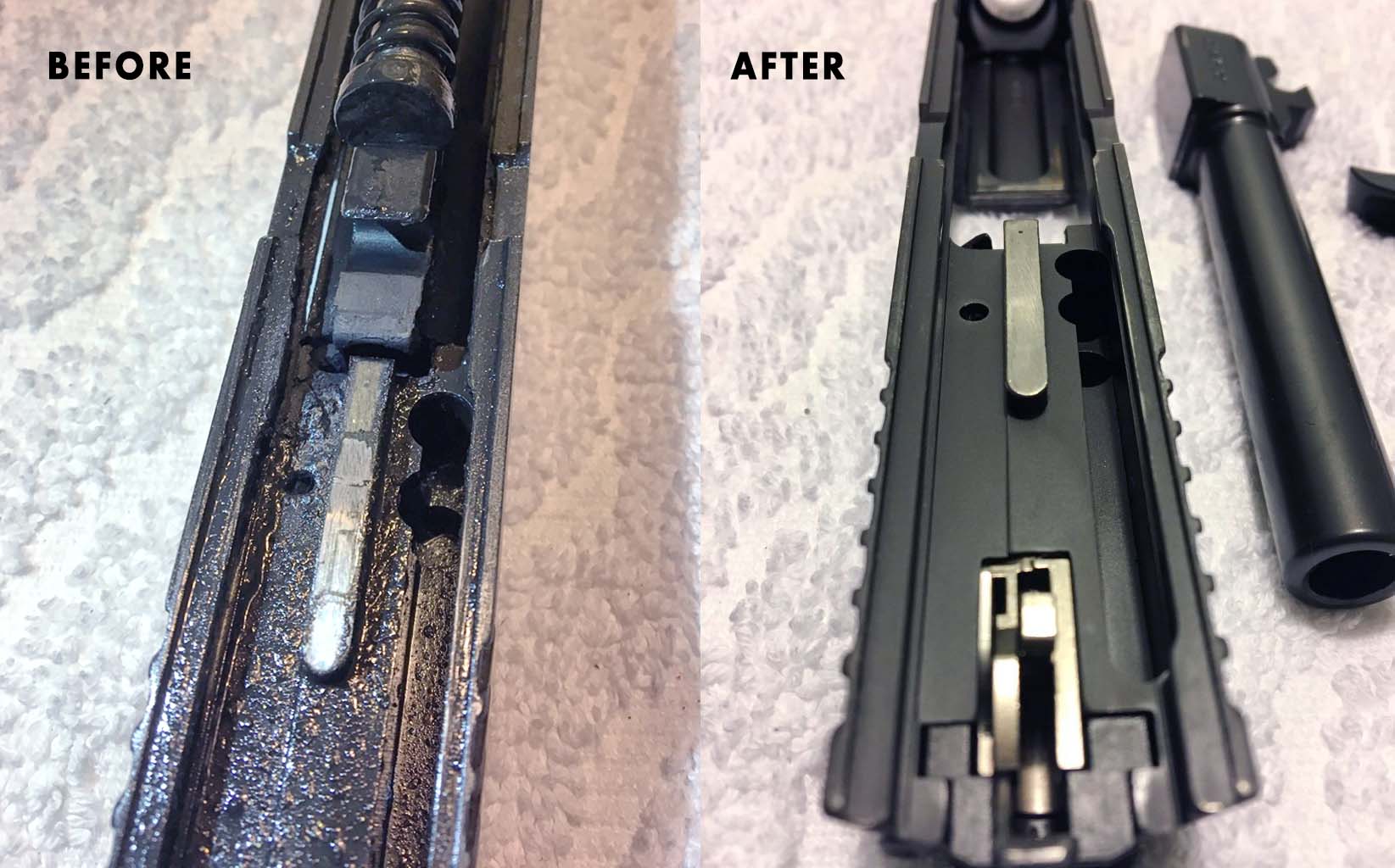Really? Consider this.
Let's say you take 200 rounds to the range to shoot. What's the difference between shooting all 200 rounds in the same session (During which you are unlikely to clean the gun) and shooting 100 rounds in two different range sessions?
Would cleaning the gun between 100 round sessions compared to 200 round session without cleaning make it shoot better?
How about if you take 1000 rounds to the range to shoot. Would there be difference between shooting all 1000 rounds in the same session or in two 500 round sessions?
When I shot USPSA, my practice sessions would average 1000-2000+ rounds depending on practice stage setup and aspects of stage I was trying to practice (Bobbing head up and down through small square opening and random speed/stop sliding targets were my challenges). And no, I would not clean my Glock 22s during the 1000-2000+ round session.
So one day I wondered how many rounds of my match reloads would take to choke my Glock 22s (I was using Montana Gold 155/165/180 gr FMJ/JHP and WSF/W231 for my match loads and Berry's plated bullets for practice). Well, it took over 4000 rounds to build up enough gunk in the pistol to where I could scoop it out. But once I took a sheet of paper towel and wiped the gunk from inside, Glock 22 would run again ... without lubrication.
Now, I do a once-a-year strip down to individual part cleaning of my Glocks but after each range session of several hundred rounds, I just put a drop of CLP or any oil on hand at four slide rail points and trigger bar. That's it.
If you shoot a lot, especially with "dirty" burning powder/loads with Glocks and get lighter striker indent on primers, consider checking inside of striker tube channel, especially behind breechwall face as fouling tends to flash up through the vent hole in the slide and pack down to build up preventing travel forward of striker tip. When I was experiencing lighter striker indent after several thousand rounds, I had to block the vent hole and fill the channel with Hoppes #9 and literally scrape caked on hard build up. After opposite side of breechwall face was cleared of packed down build up, striker left nice and deep indents on primers again -
https://www.thehighroad.org/index.p...ire-primer-failure-ideas.625875/#post-7734121
Glock slide with striker removed. White arrow points to slide vent.
Glock slide breechwall face with vent hole with screwdriver through
Bottom of striker channel showing backside of breechwall face with rectangle opening for striker tip. Bottom of channel is where the fouling will build up and pack hard from striker pounding behind it ... This hard packed build up is what can prevent full striker indent on primer.
Red arrows point to part of striker that pounds the fouling build up into hard flake behind the breechwall face



 Both weapons had to be taken into evidence and tested at the lab to eliminate them, while waiting for forensic results from the shooting victim. A new policy of never leaving the range with a dirty weapon was instituted.Go figure.
Both weapons had to be taken into evidence and tested at the lab to eliminate them, while waiting for forensic results from the shooting victim. A new policy of never leaving the range with a dirty weapon was instituted.Go figure.

